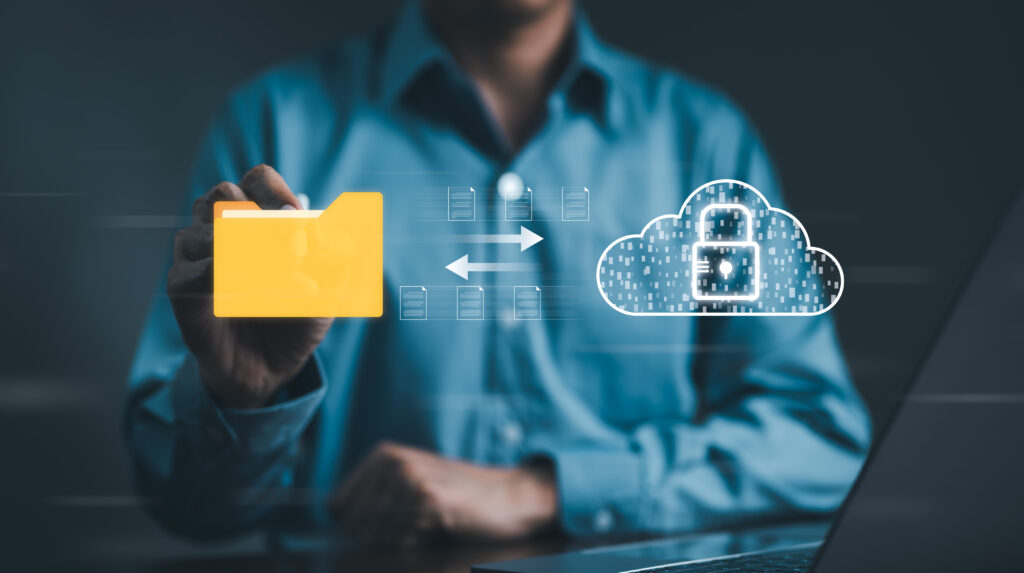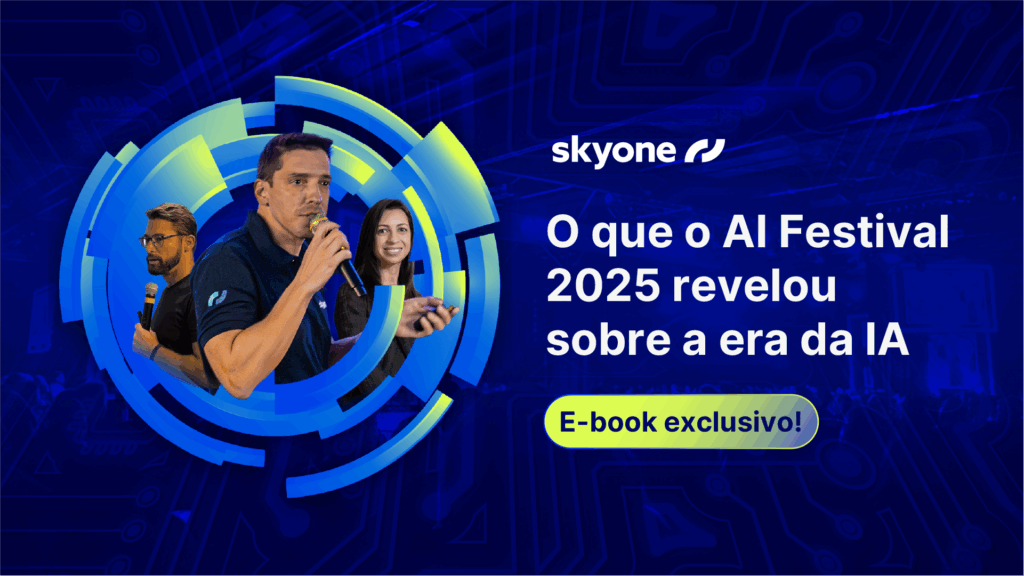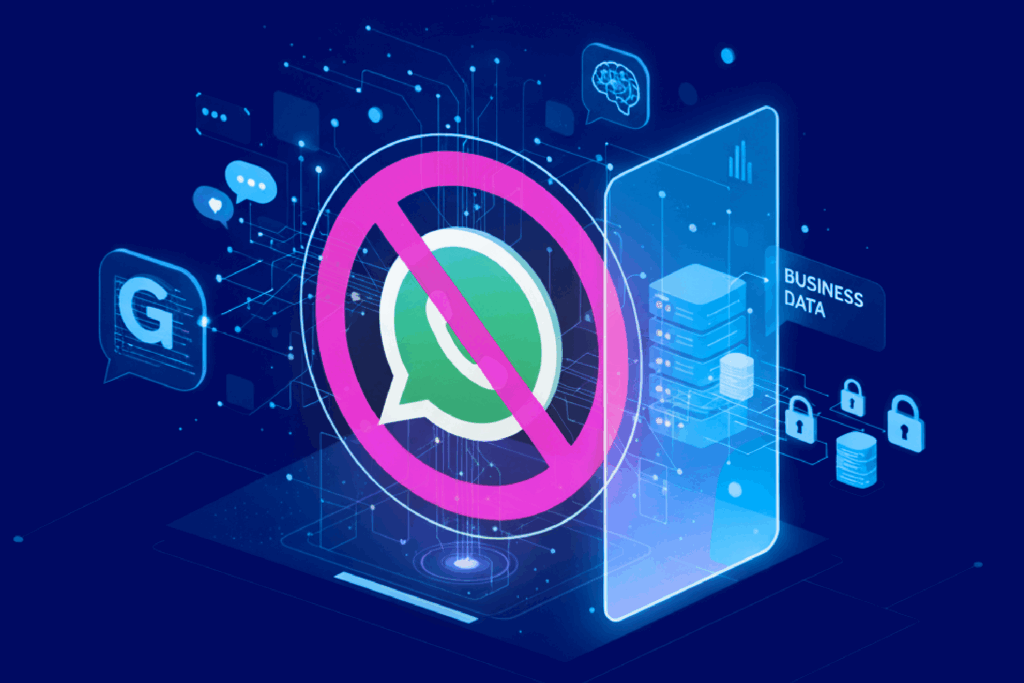Introduction
When we talk about data leakage, the problem is no longer the possibility, but the frequency. According to IBM's Cost of A Data Breach Report 2023 , the average cost of a single leak exceeded $ 4.45 million .
But the value itself says less than the context behind it. In more than half of the cases analyzed, the cause was not a highly elaborated external attack, but internal flaws : poorly configured permissions, out -of -hour shared documents, affordable data to those who should not. They are operational carelessness that, together, build a silent and highly costly liability.
In this scenario, preventing became less about reacting to sophisticated threats and more about controlling the obvious . This is where Data Loss Prevention (DLP) comes in, an approach focused on exposure reduction, sensitive data control and everyday risk mitigation with intelligence, not with blockages.
Throughout this content, we will explore why leaks have become as recurring, as DLP acts to anticipate problems before they gain scale and what to consider by taking the first steps toward more strategic data protection.
Let's go?
Why is data leakage a constant threat?
In theory, every company knows that data is valuable. In practice, few treat this information as an asset that needs to be protected continuously, accurately and structured . The truth is that even in environments with some level of control, data circulates more than they should - and with less vigilance than it would be safe.
Data leaks are not only caused by sophisticated invaders or catastrophic security failures. Most of the time, they start with banal actions : a report sent to the wrong recipient, a backup exposed in a public cloud, an employee who accesses data that should not, etc. That is, small flaws that accumulate and go unnoticed until they are no longer small .
In addition to the financial impacts, a leakage carries consequences that are difficult to measure , such as breach of confidence, wear with customers and partners, and exposure to regulatory sanctions. And all this can happen without any visible signal , without sirens or alerts: data simply comes out of control.
This is why the debate is no longer if the leak will happen, but when and how we can minimize its impacts . And this change of mindset is what makes room for approaches such as Data Loss Prevention (DLP), which we will see below.
What is Data Loss Prevention (DLP)?
If data are strategic actives, why do we still treat your protection as an infrastructure problem? It is this contradiction that Data Loss Prevention (DLP) helps to solve , repositioning information security not as a barrier, but as an intelligent management mechanism .
DLP is a set of practices and technologies that allows preventing unauthorized departure of sensitive information, wherever they are : in transit, rest or in use. Unlike solutions that act only on the edge of the network or specific devices, DLP follows the data on its life cycle, identifying what should be protected and applying clear rules on how this content can be accessed, shared or stored.
In essence, it is an active monitoring system that understands the context in which data is being manipulated. The same file, for example, can be allowed on an internal channel, but blocked if attached to an email . It is this situational intelligence that makes DLP a real prevention tool, not just audit.
More than a shield, DLP acts as a continuous filter capable of anticipating risks before they compromise the operation. Best of all, without requiring people to dramatically change the way they work - which ensures adherence and continuity .
In the next topics, let's detail how this logic applies to practice and what are the different types of DLP that can be combined according to the maturity and needs of the company.
How does a DLP solution work?
The logic behind a Data Prevention (DLP) solution is simple on the surface, but sophisticated in execution : to observe, understand and act before the data come out of the right place. What differentiates DLP from other security technologies is its ability to act directly on content and context , not just devices or network.
It all starts with the identification of sensitive data. Based on predefined rules or automatic recognition models, the tool classifies information such as contracts, personal data, financial records or proprietary codes. From there, she monitors the behavior of these data in real time , observing how they are accessed, shared or manipulated, and by whom.
This monitoring is the central point: it allows the solution to recognize actions that escape the standard or representing . An employee trying to copy confidential files to a pen drive , for example, or trying to send critical data by email . When this happens, DLP can trigger automatic action : block, encryption, alert or just register the event, depending on the defined policy.
And all this happens in the background , without interrupting the operation or depending on the constant surveillance of the teams. DLP acts as a continuous control mechanism, which brings predictability to an environment that, by nature, is dynamic and full of exceptions.
Next, let's understand where these solutions work and why different types of DLP are used together to cover all critical areas of the company. Follow!
What are the main types of DLP?
Not all sensitive information is in the same place, and therefore protection cannot be unique either. Data Prevention (DLP) strategy combines different layers of activity , each responsible for monitoring and controlling the data at a specific point of the company's digital ecosystem.
These points go far beyond the traditional corporate network. With the advancement of remote work, cloud and decentralized applications, data circulates by emails , personal devices, collaboration environments and even backups -which requires complementary approaches to maintaining visibility and control .
Then know the main types of DLP and how each contributes to the construction of a comprehensive and integrated protection:
- Network DLP : Focused on traffic that circulates within the company's infrastructure, this type of DLP acts as a smart filter, analyzing the content that enters and goes through the network. It is especially useful for blocking undue data shipments to protocols such as HTTP, FTP or corporate
email - Endpoint DLP : Installed directly on user devices (such as notebooks , desktops and even smartphones Endpoint DLP protects the last mile of information. It detects attempts to copy, transfer or edit critical files, even when the device is offline or outside the company's network;
- DLP for storage : This type acts on data repositories (servers, shared folders, legacy systems), ensuring that archived information is not exposed by carelessness or inadequate configuration. It is also useful for applying retention and exclusion policies;
- Cloud DLP : With the popularization of SaaS tools, cloud DLP monitors stored and shared data on platforms such as Google Workspace, Microsoft 365 or online storage services. It helps balance collaboration and safety without compromising the flexibility of the cloud ;
- DLP for email : Responsible for analyzing messages and attachments sent by email, this type of DLP is essential to avoid accidental leaks, such as sending personal data to the wrong recipient or sharing confidential contracts without encryption.
These solutions, when well orchestrated, form a continuous protection ecosystem. But no tools are effective alone. The true impact of DLP comes from the combination of technology, policy clarity and people's engagement.
It is about this first step, the initial structuring of the strategy, which we will talk about.
Where to start: first steps to implement DLP
Data Prevention strategies fail is not in technology but in haste. Trying to protect everything from everyone all the time often generates more frustration than a result. The most effective path begins with focus : understanding what you need protection, what risks are most critical and how the company deals with everyday data.
By prioritizing the essentials and building a well -defined base , it is possible to advance more clearly and less internal resistance. Below we highlight three fundamental pillars to take the first steps in a structured way.
Identification of sensitive data
The starting point is answering a simple but not always clear question: what data cannot, under any circumstances, leak?
They can be customer information, financial registrations, employee personal data or intellectual property. By mapping these assets accurately, the company can direct efforts and tools where they really make a difference.
Automated tools can accelerate this mapping, but the involvement of business areas is irreplaceable . After all, they know the context of data use and the impacts of their exposure.
Creation of basic security policies
With the critical data identified, the next step is to define clear rules for your handling . It is not about creating an extensive and generic booklet, but of translating what the company expects in terms of safe behavior, with simple, applicable and auditable guidelines.
This may include limits for sending files by email , profile access control or encryption use in certain flows. The rule here is to protect without bureaucratizing .
Team engagement and protection culture
Technology alone does not protect anything. A DLP strategy only works when people understand their role and see value in it. Therefore, building a data protection culture is as important as deploying the right solution.
This goes through constant communication, objective training and alignment between technical and operational teams. This is because security needs to stop being a “department” and becomes a cross -sectional practice, incorporated into a daily basis.
And in fact, these first steps do not require large investments, but intentionality . And when well structured, they create the ideal conditions for more robust solutions, such as the following ones, have real impact.
Skyone: Data protection and algorithms with intelligence and control
Not all leak comes from outside. In many cases, data exposure is born within the operation itself , such as in control files without control, emails sent with haste or permissions granted beyond the necessary. When this information circulates between systems, devices, and cloud environments, the complexity of protection is imposed .
At Skyone , we face this challenge with an integrated vision Data Loss Prevention technologies in different layers, within an architecture designed to protect not only the data, but also the algorithms and models of Artificial Intelligence (AI) built from them.
While public solutions of processing data in shared and open environments, we maintain all flows under customer control , in dedicated, auditable instances and especially embarked on their environment, ie installed and operational within their own environment. This ensures that no information comes out of the authorized scope, not even the inferences generated by its own models.
This approach allows our customers to advance in their Analytics , Automation and Generative without compromising confidentiality, compliance or intellectual property . And more than protecting, we give visibility : about who accesses, when, where and for what purpose.
This is the difference between applying DLP as a punctual tool or as part of a continuous strategy of protection and growth. If you are looking for this level of maturity, talk to one of our experts today . And let's draw together the next step of data security in your business, with intelligence and control from the origin!
Conclusion
No data leaks alone. Behind each incident, there is always a context, such as excessive permission, a poorly defined process, a policy that has never left the paper, etc. What the Data Loss Prevention (DLP) proposes to us is not to control all the time, but to create an environment where data can circulate with purpose and responsibility.
Throughout this content, we have seen how leakage prevention depends less on isolated tools and more on a combination of technology, governance and culture . We explore the types of DLP, their mechanisms, and how to take the first steps clearly, avoiding the temptation of quick solutions to complex problems .
We also show how, at Skyone , we transform this logic into practice: protecting data and algorithms in an integrated way , from the base to the most sophisticated streams of Artificial Intelligence (AI).
How about continuing to expand this view? For this, we suggest reading another content from our blog that connects with what we treat here: Privacy and AI safety: strategies and benefits . In it we deepen the discussion on how to deal with sensitive AI environments , an essential step for those who want to protect not only the systems, but also the decisions they influence.
Until next time!
Author
-
Data expert and chef in his spare time, Theron Morato brings a unique look at the universe of data, combining technology and gastronomy in irresistible metaphors. Author of the "Data Bites" column on Skyone's LinkedIn, it turns complex concepts into tasty insights, helping companies to extract the best from their data.





